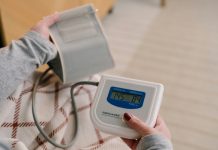
A heart attack, medically known as a myocardial infarction, is a life-threatening condition that occurs when blood flow to the heart is blocked.
This blockage is typically the result of plaque buildup in the coronary arteries, which can rupture and form a clot that obstructs blood flow.
Understanding the stages of a heart attack, recognizing the signs, and knowing what to do can significantly impact outcomes.
Let’s break down this complex process into simpler terms, shedding light on a topic of paramount importance to everyone, not just those in the medical field.
The onset of a heart attack can be gradual, with symptoms appearing hours, days, or even weeks in advance.
Initially, the discomfort may be mild and intermittent, making it easy to overlook. However, as the blockage worsens, symptoms become more pronounced and persistent.
One of the first signs of a heart attack is often chest pain or discomfort, which can feel like pressure, squeezing, fullness, or a painful sensation that may not be limited to the chest alone.
This discomfort can spread to the shoulders, neck, arms, back, or even the jaw. Unlike pain from a muscle strain, which might change with movement or breathing, the pain from a heart attack is usually constant and unrelieved by resting.
Shortness of breath is another common symptom, either accompanying the chest pain or occurring before it. This happens because the heart struggles to pump blood effectively, causing fluid to back up into the lungs.
Other symptoms might include nausea, lightheadedness, or breaking out in a cold sweat.
Importantly, symptoms can vary between individuals, and notably, women may experience different symptoms such as shortness of breath, nausea/vomiting, and back or jaw pain more prominently than the classic chest pain.
What happens during a heart attack is a critical reduction in oxygen-rich blood reaching a part of the heart muscle. Without prompt treatment, this part of the heart can suffer irreversible damage, impacting the heart’s ability to function properly.
Immediate action is crucial. If you or someone else exhibits symptoms of a heart attack, calling emergency services right away is paramount.
The sooner medical treatment begins, the better the chances of survival and recovery. While waiting for emergency medical services, it’s advised to keep the person calm and resting to avoid unnecessary strain on the heart.
Treatment for a heart attack aims to restore blood flow as quickly as possible.
This can involve medication like aspirin and clot-busters, as well as procedures such as angioplasty, where doctors use a balloon to open blocked arteries, or bypass surgery to create a new path for blood to reach the heart muscle.
Prevention is also a key part of the conversation. Lifestyle changes such as eating a balanced diet, exercising regularly, avoiding tobacco, and managing stress can significantly reduce the risk of heart attacks.
Regular medical check-ups are important for monitoring heart health, especially for those with risk factors like high blood pressure, high cholesterol, obesity, diabetes, or a family history of heart disease.
In conclusion, understanding the stages and signs of a heart attack, along with knowing what actions to take, can save lives.
Awareness and education are powerful tools in the fight against heart disease, empowering individuals to make informed decisions about their health. Remember, a heart attack is a medical emergency, and immediate action can make all the difference.
If you care about heart disease, please read studies that herbal supplements could harm your heart rhythm, and how eating eggs can help reduce heart disease risk.
For more information about heart health, please see recent studies about new way to prevent heart attacks and strokes, and results showing this drug for heart disease may reduce COVID-19 risk.
Copyright © 2024 Knowridge Science Report. All rights reserved.



